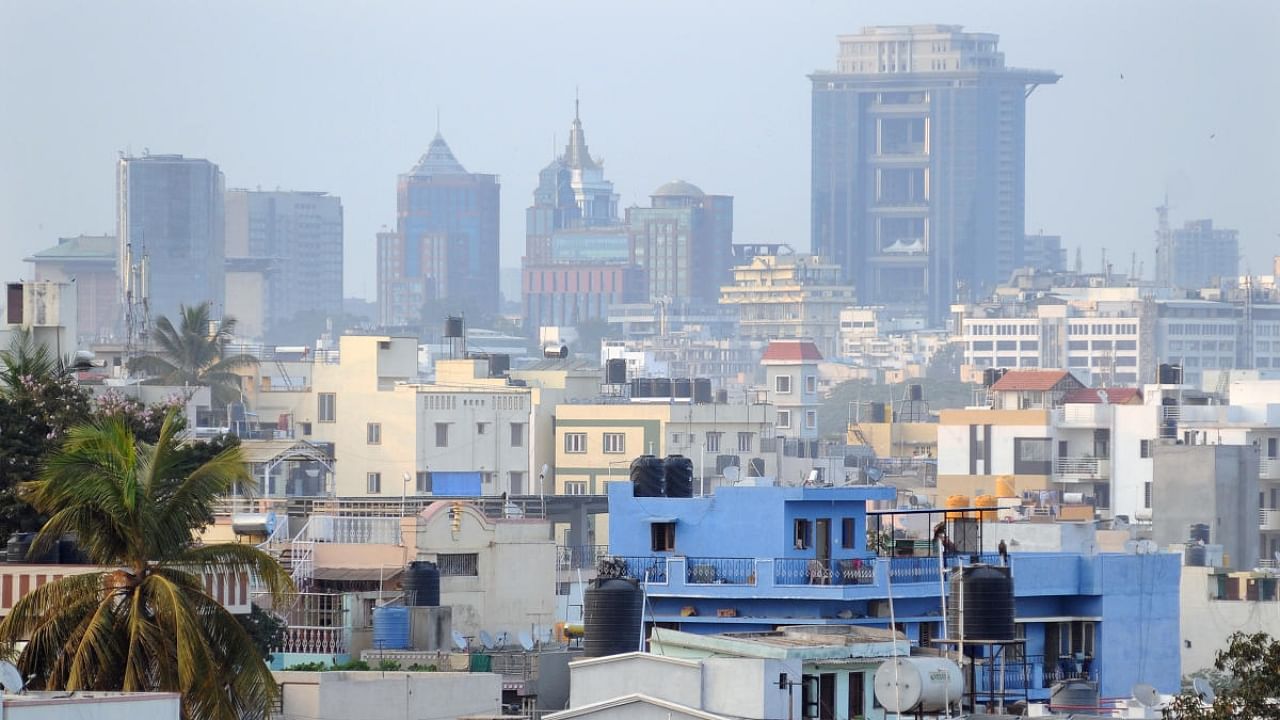
A view of Bengaluru city.
Credit: DH Photo
It’s been 75 years since the Republic’s creation, and while it has fulfilled its intended ambitions of nurturing national unity and democracy, it needs to empower lower levels of government to tackle 21st century challenges.
India celebrated its 75th Republic Day this year, a monumental milestone, to say the very least. Despite initial uncertainties about India’s existence post-independence, since the enactment of its constitution in 1950, the country has made immense strides in fostering national unity, deepening democracy, and alleviating poverty. As India enters 2024, it faces a mix of old and new challenges, from mass migration and inequality to climate change. Many of these challenges will manifest in cities, which are ill-equipped to handle them. To address these challenges effectively, the Republic’s current structure might need to evolve, encouraging the devolution of powers to local government bodies (LGBs).
Climate change poses a significant threat to the country in the coming decades, with the country being vulnerable to cyclones, heatwaves, flooding, and air pollution. By 2050, climate change will displace an estimated 45 million people across the country, a figure close to the population of Spain, and up to 4.5% of India’s GDP could be at risk by 2030. Climate change mitigation measures alone are likely to cost $1 trillion by 2030 as well. With this in mind, what can the Indian Republic do? The report, Localising Green Transitions in India (2022), by Artha Global emphasises the importance of cities in the green transition and argues that they must be better empowered to tackle these challenges.
India’s political system, built in times of political, social, and economic upheaval, encourages the Union government to centralise power in the name of national unity. While attempts were made in 1993–94 to devolve power to lower authorities, the onus of decentralisation fell onto state governments, which lacked incentives to do so. This setup diminishes accountability and undermines governance objectives. With local governments bearing the brunt of public service delivery, the Republic must be reenvisioned in such a way that the Union and states act as facilitators and coordinators of major policy challenges and imagine LGBs as public service delivery units.
Why is this distinction in roles key? Consider the case of urban India. Indian cities emit close to twice the amount of carbon compared to the national average, but ULB revenue as a proportion of GDP is approximately one percent. Moreover, it is estimated that by 2050, India will have close to a billion people living in its cities, or more than 50% of its population. Nonetheless, ULBs as of now lack the means and power to impact citizens’ lives directly. They also act as first responders in cases of natural disasters, from cyclones to heat waves, and the cost of action and mitigation is immense. For example, the cost of climate change damage to coastal infrastructure across the country ranges from an estimated $27 billion in Mumbai to $43 million in the Baleshwar district of Odisha.
A report by NITI Aayog shows that India’s ULBs lack the capacity to deal with the scale of the impact of climate change and a surge in urbanisation. The agglomeration effects of urbanisation are already breaking down with rising air pollution, congestion, and broken infrastructure. But there are tools that urban local bodies may be able to leverage to facilitate this shift, from redoing building codes to mandating energy-efficient materials and sources to incentivizing public transit, mandating smart metres, and creating and enforcing retrofitting guidelines. However, they need to be empowered to think through these regulations and, in turn, successfully implement them at scale.
Additionally, civil servants and officials must be better trained and equipped to keep abreast of new technologies and concepts to better govern the areas they are meant to administer. Many of these gaps can be plugged by higher levels of government providing the necessary framework guidance for LGBs to administer, by homogenising and standardising building, construction, and environmental norms to prevent duplication of effort in land markets, and by also digitising land records. This approach in turn delineates clear responsibilities for states to act as framework providers and LGBs to act as delivery units instead.
The Indian Constitution has provided a framework for India’s enduring success as a unified nation with a vibrant democracy. Having achieved its primary goal of establishing national unity amidst the tumult of 1947, it must evolve to grapple with key challenges of the 21st century; a new
approach that encourages devolution of power is the need of the hour.
(The writer is with Artha Global, a policy consultancy)